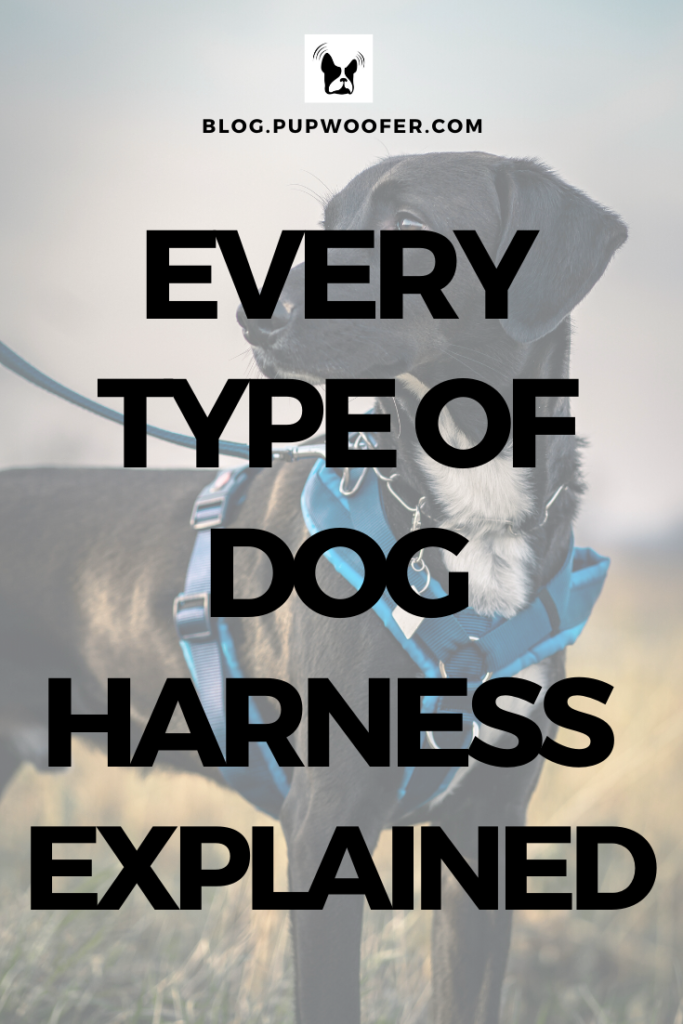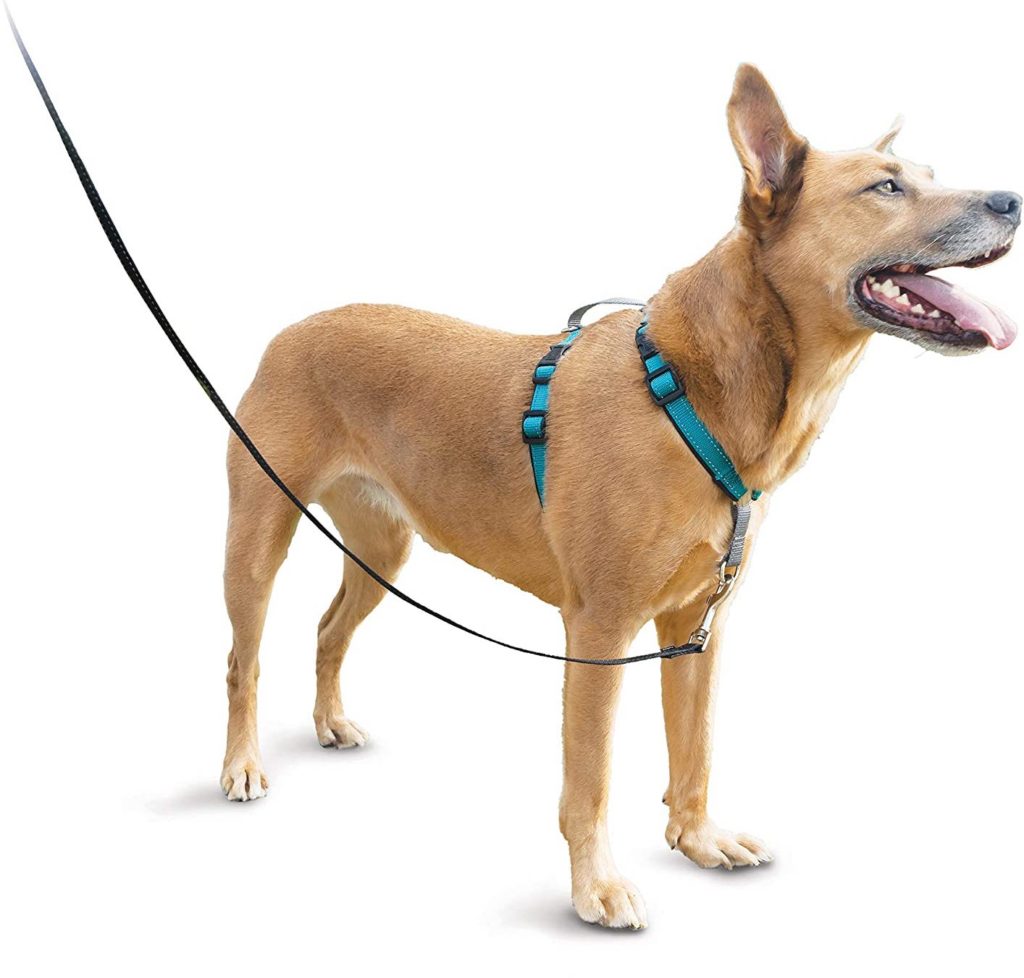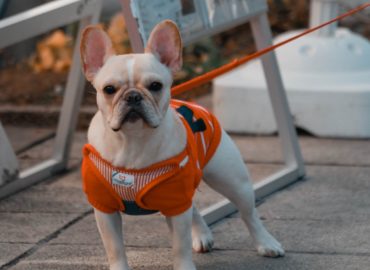
Walking your furry friend is an on-going ritual.
Every dog is extremely unique in his or her size, shape, demeanor and also in how they walk on a leash.
Because each dog is so different, the pet care industry has created a massive array of different harnesses that aim to make taking your dog for a walk a simpler, safer and more comfortable experience for you and your little buddy.
As a result, we now have so many different harnesses to choose from, that picking the right one can be overwhelming.
Well you’re in the right place! This breakdown will make choosing the right harness a “walk in the park”.
So as it turns out, there are actually only 2 different factors that define nearly every dog harness:
- Where the harness attaches to the leash
- How the harness attaches to your dog
And then there are 2 or 3 different styles within each of those 2 parameters:
- Where the harness attaches to the leash:
- Front Clip
- Back Clip
- Dual Clip
- How the harness attaches to your dog:
- Over-The-Head
- Step-In
Every harness essentially combines 1 style from the top list with 1 style from the bottom list to create the basis for the harness design. This gives us basically 6 different styles of harness:
| Front Clip | Back Clip | Dual Clip | |
| Over-The-Head | Over-The-Head Front Clip | Over-The-Head Back Clip | Over-The-Head Dual Clip |
| Step-In | Step-In Front Clip | Step-In Back Clip | Step-In Dual Clip |
Benefits of Each Type of Dog Harness
Every combination caters to a different type of dog. Here is what to consider about each harness style when choosing the right harness for your pup:
Over-The-Head Harness VS. Step-In Harnesses
Over-The-Head harnesses are much more common than step-in harnesses because you have to put both of your dog’s feet into the step-in holes and he has to leave them there for about 3 seconds while you reach around and pull the harness up around him to snap it in place.
It’s an easy snap but many dogs are likely to move their paws before you can close the harness.
Over-The-Head harnesses are better for dogs who don’t mind things going down over their head and Step-In harnesses are better for dogs who won’t tolerate this, as long as they can stand still long enough for you to close a step-in harness.
Back Clip VS. Front Clip Harnesses
Back Clip leash connections are still the go-to choice on the market today. This is the traditional leash connection.
Everyone knows how it works and how to use it. It is the best choice for certain situations where you actually do want your dog to be able to pull.
For instance, when you’re running, biking or hiking with your dog, it’s good to have a back clip connection so that you and your dog’s paths don’t cross accidently.
This is a situation where a front clip won’t work.
The front clip leash connection does a very special job.
It prevents your dog from being able to pull you.
It does this by redirecting his path when he gets to the end of the leash and there’s no more slack.
This forces your dog to regroup before he can move on and make forward progress.
Since your dog naturally wants to move forward, he tends to start to move closer to your pace to avoid being redirected.
Both configurations have their benefits and therefore each caters to a specific purpose.
Dual Clip Harnesses
As far as leash connections go, dual clip harnesses are becoming an easy favorite and will likely become the norm.
They also make the most sense because they let you choose where you want to connect the leash and allow you to change it whenever you need to.
You can even connect to both clips at the same time if you have a leash with 2 leads.
This configuration is used to provide added stability for bigger, more powerful breeds, or more aggressive dogs in general.
Special Types of Dog Harnesses
Now that we understand the basic harness types, there are a few terms that are often also thrown in the mix which really just describe some additional features rather than another type of harness altogether. These terms are:
- No-Pull Harness
- Vest Harness
- Tightening Harness
No Pull Harness
The “no-pull” feature of a harness has been so widely advertised in recent years that many people believe that it is a completely different type of harness altogether.
It’s not.
It actually just describes one of the features that we mentioned above: the front clip harness.
A no-pull harness is a harness that is designed to not allow your dog to pull you forward by walking too far ahead of you and pulling on the leash.
It does this by putting the leash attachment in front of the dog on his chest so that when he runs out ahead of you, the tightening leash will redirect his path and swing him toward you rather than allowing him to pull you forward.
The name given to the concept is “no-pull” but it really just indicates that it is a harness with a leash clip in the front.
Vest Harness
A “vest harness” like the no-pull harness again describes a certain feature rather than a completely different type of harness altogether.
A vest harness can be any of the 6 styles of harnesses that we outlined above with the only difference being that the word “vest” describes the width and padded thickness of the straps especially the strap that stretches down from your dog’s neck and shoulders to his belly.
Where many traditional harnesses use thin straps that are all pretty much the same width, a vest harness typically has a much wider middle strap that is also usually cushioned for your dog’s overall comfort and too prevent chafing on this part of the body and in the armpits that can sometimes happen with thin straps.
This larger panel reduces pressure to the areas where it contacts the body, mitigating the possibility of irritation.
This is designed especially with bigger, more powerful dogs in mind but will effectively eliminate chafing and irritation in all breeds.
Tightening Harness
The tightening harness is yet another style, though it is much less popular because of the way it works.
Like the no-pull harness, a tightening harness aims to discourage a dog from pulling on the leash.
It does this with a design that allows the straps on the harness to become much more snug around the dog’s body when he pulls on the leash.
It was designed as a training method using negative feedback to teach dogs to walk with some slack in the leash.
The tension that the dog feels is not excessive, but most owners prefer the no-pull/front clip concept for getting their dog not to pull.
Other Key Features of Dog Harnesses
Other key features to note on dog harnesses include:
- Reflectivity
- Adjustability
- Breathability
- Back Handle
- Car Safety
Reflectivity
Many dog harnesses are made of highly reflective materials like 3M.
Harnesses like these appeal to people who take their dogs for walks/runs after sundown to ensure visibility with passing vehicles.
Adjustability
Good harnesses have 2-4 adjustable straps to customize the harnesses fit to each individual dog.
Typically the number of adjustable straps on the harness indicate just how perfect the fit can become.
This is a VERY important feature for some pet owners because some dogs, known as “Houdini’s”, are innately gifted with the ability to maneuver themselves out of even some of the industry’s highest quality harnesses.
If this describes your dog, you definitely want a harness with at least 2 adjustable straps.
Breathability
Vest harnesses, as we discussed above, add padding and protection for your dog’s skin but can also cause your dog to sweat more on hotter days.
Because of this, some companies have developed vest harnesses constructed with mesh around the padding instead of a solid, less breathable material to enable air to be able to flow through the vest and any perspiration to flow out and evaporate.
Back Handles
A back handle is simply a handle on the back of the harness near the back ring, where the owner can grab hold and have complete control of the dog.
Think of it as an emergency brake for your dog for situations where you need to make sure he stays put.
These can definitely come in handy with bigger dogs, for instance, when small children or small animals like birds and rabbits are present that your dog will want to chase.
Car Safety
Some harnesses are designed with car trips in mind.
Many people drive their dogs to the park or trail for walks and exercise. For this, there are several harnesses that are crash tested and come with accessories for securing the harness to the car like a seat belt to keep him safe.
This is also helpful in making sure your dog stays put while you drive so he won’t distract you.
Examples Of Different Types Of Dog Harnesses
Now that we’ve covered all the different designs, and design elements, let’s look at some of the most popular examples of each type available on the market today.
These 8 examples are the industry-leaders in each category and have all received overwhelmingly positive reviews.
RabbitGoo 3M Reflective No Pull Dog Harness
- Over-The-Head
- Dual Clip
- Vest
- Reflective
Kurgo Go-Tech Adventurer
- Over-The-Head
- Dual Clip
- Vest
Freedom No Pull
- Over-The-Head
- Dual Clip
- Dual Lead Leash
PetSafe Easy Walk
- Over-The-Head
- Front Clip
- Back Handle

Ruffwear Front Range
- Over-The-Head
- Dual Clip
- Reflective

Gooby Perfect Fit X Choke-Free
- Step-In
- Back Clip
Puppia Rite Fit
- Over-The-Head
- Back Clip
- Mesh Vest
Voyager All Weather
- Step-In
- Back Clip
- Mesh Vest

Conclusion
So next time you’re in the pet store or shopping online you’ll be able to make sense of that jumble of straps, pads and clips.
The points in this article can help guide your research but ultimately you’ll need to test a couple harnesses out and determine what’s right for your little buddy. Happy Trails!




